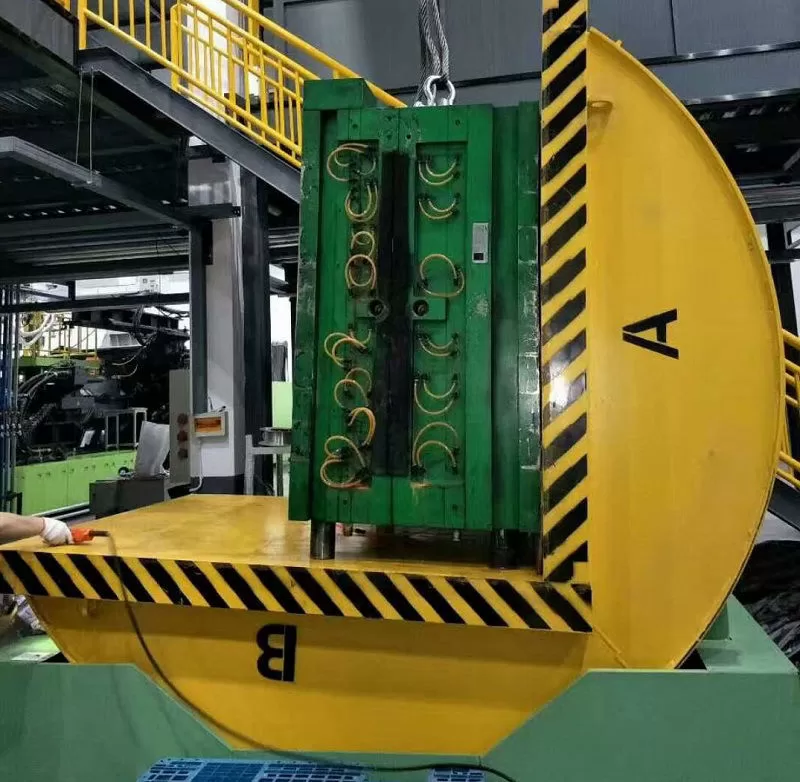Optimizing Material Handling: A Fabricator's Guide to Load Inverters and Upenders
Efficient and safe material handling is crucial in any fabrication or manufacturing environment. Manually rotating or repositioning heavy or bulky loads like boxes, pallets, or molds is often inefficient, labor-intensive, and poses significant safety risks. Load inverters and upenders offer automated solutions to streamline these processes, enhancing productivity and protecting both personnel and products.
These machines are designed to handle various products and loads, and configurations can often be tailored to specific processing requirements in stocking, manufacturing, and transportation.
More inverter and upender
Understanding Load Inverters: 180-Degree Rotation
A load inverter, often called a pallet inverter, is designed to grip a load securely and rotate it through a full 180 degrees. This capability serves several vital functions in a production or warehousing setting:
- Pallet Exchange: Easily switch loads from wooden pallets to plastic or captive pallets for hygiene-controlled areas or distribution requirements, without manual restacking.
- Damaged Goods Recovery: Quickly invert a stack to access and replace damaged goods or packaging at the bottom of the load.
- Product Inversion: Some manufacturing processes require products to be inverted for cooling, curing, or further processing steps.
- Space-Saving Storage: Inverting certain types of loads can allow for more stable and efficient stacking, optimizing warehouse space.
By automating the inversion process, these machines ensure gentle handling, prevent product damage, and significantly reduce the time and labor involved compared to manual methods.

Understanding Load Upenders: 90-Degree Rotation
Load upenders, sometimes referred to as tippers or tilters, rotate loads through 90 degrees, typically moving them from a horizontal to a vertical orientation, or vice versa. Key applications include:
- Orientation for Processing: Positioning items like coils, rolls, or large panels correctly for feeding into machinery or assembly lines.
- Improved Access and Ergonomics: Tilting bins or containers allows workers easier, more ergonomic access to contents, reducing strain during picking or assembly tasks.
- Inspection and Maintenance: Upending large items like molds or dies can provide safe and convenient access for inspection or maintenance.
- Loading and Unloading: Facilitating the loading or unloading of specific product types onto conveyors or vehicles.
Gentle, controlled 90-degree rotation prevents damage to sensitive products and minimizes the risk of contents spilling or shifting unsafely.
Core Benefits of Implementing Inverters and Upenders
Integrating these automated handling solutions brings tangible advantages to fabrication and manufacturing operations:
- Enhanced Productivity and Efficiency: Automating the rotation process drastically cuts down cycle times compared to manual handling or using conventional forklifts with specialized attachments. This boosts overall throughput.
- Improved Worker Safety and Ergonomics: Eliminating the need for manual lifting and awkward maneuvering of heavy loads significantly reduces the risk of musculoskeletal disorders (MSDs) and other workplace injuries. This contributes to a safer working environment and can lower workers' compensation costs. (See OSHA guidelines on material handling for more on ergonomic risks).
- Reduced Product Damage: Controlled clamping and rotation mechanisms handle loads gently, minimizing the risk of drops, impacts, and abrasions that can occur during manual handling or with less precise equipment.
- Optimized Warehouse Space and Flow: Enabling efficient pallet exchange or changing load orientation can lead to better space utilization and smoother workflow through different operational areas.
- Versatility: These machines can often be adapted to handle a wide range of load sizes, shapes, and weights, including boxes, pallets, drums, coils, molds, and sheet materials.

mold upender Key Considerations When Selecting Equipment
Choosing the right inverter or upender requires careful consideration of your specific application:
- Load Characteristics: Define the maximum weight, dimensions (L x W x H), and stability of the loads you need to handle.
- Rotation Requirements: Determine if you need 90-degree (upending) or 180-degree (inverting) rotation.
- Throughput Needs: How many loads per hour or shift need to be processed? This impacts the required speed and duty cycle of the machine.
- Loading Method: How will loads be brought to and taken from the machine (e.g., forklift, pallet jack, conveyor)? This influences machine design (e.g., floor-level loading, ramp access, pit mounting).
- Clamping Mechanism: Consider the type of load surface and whether hydraulic or pneumatic clamping is more appropriate. Ensure clamping pressure is adjustable to prevent product damage.
- Operating Environment: Factors like available space, floor capacity, and whether the area is wet, dusty, or requires specific hygiene standards (e.g., stainless steel construction) are important.
- Safety Features: Look for essential safety features like perimeter guarding, light curtains, emergency stops, and secure clamping interlocks.
- Integration: Will the machine operate standalone, or does it need to integrate with existing conveyor systems or automated guided vehicles (AGVs)?
Implementation and Maintenance
Proper implementation and maintenance are key to maximizing the benefits and lifespan of your equipment:
- Installation: Ensure the machine is installed on a level, suitable foundation according to manufacturer specifications.
- Operator Training: Provide thorough training to operators on safe operating procedures, load capacity limits, and emergency protocols.
- Preventive Maintenance: Adhere to the manufacturer's recommended preventive maintenance schedule, including lubrication, inspection of hydraulic/pneumatic systems, and checking safety features. Regular maintenance minimizes downtime and ensures continued safe operation.

mold upender3 Conclusion
Load inverters and upenders are powerful tools for addressing common material handling challenges in the fabrication and manufacturing sectors. By automating the rotation and reorientation of loads, they provide a fast, reliable, and economical solution that significantly boosts productivity, enhances worker safety, reduces product damage, and optimizes operational flow. Carefully selecting the right machine based on specific application needs and ensuring proper implementation and maintenance will yield substantial improvements in efficiency and safety for your handling operations.

